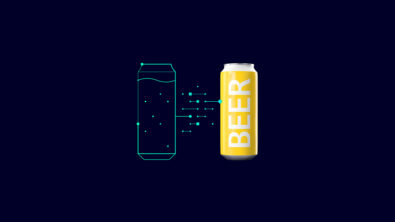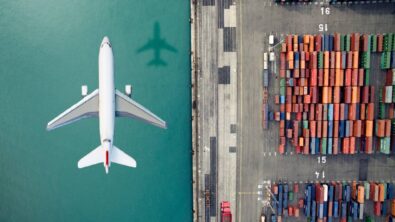Digital technology as a driver of green logistics

In the new world of logistics, paper documents and lists are relics of a bygone analog era. Digital platforms and processes are revolutionizing the $10 trillion global logistics industry. The cloud is becoming the command center for cross-enterprise processes. A veritable flood of data is creating an infrastructure that allows goods to flow. Digital technology can even help us achieve our environmental targets—without waiting in traffic.
Lawmakers are not the only ones who expect polluters to pay. Port authorities are charging higher demurrage for ships that darken the skies with the emissions from the heavy fuel oils they burn. Consumers are punishing businesses that act irresponsibly. Stock prices erode when environmental scandals come to light.
Understandably enough, logistics service providers are now expected to deliver a degree of transparency that lets their customers in the manufacturing and retail sectors sleep soundly at night—secure in the knowledge that they have a green light for the rosy promises made in their sustainability reports.
Integration is key
The foundation for green logistics lies in the digital integration of the entire supply chain with all the supply chain partners: suppliers, manufacturers, warehouse operators, transport companies, logistics service providers, wholesalers, retailers, customers. That’s because potential for green logistics is scattered across various points of a production and distribution network. It’s achieved by eliminating empty runs, powering warehouses efficiently, instituting recycling systems, and linking green modes of transport like trains and barges.
But how can the huge volumes of bits and bytes routinely generated by such a complex network yield an environmentally friendly approach?
Cloud-based software platforms provide all the tools and features needed to digitize such highly complex supply structures, integrating all the people and places involved in the supply chain, regardless of the systems or programs that they’re using, and seamlessly modeling every step in the process for complete supply chain visibility.
All of this is made possible by tools like the supply chain control tower, which displays real-time logistics movements and status updates while serving as a centralized command center. A supply chain control tower lets you design and optimize structures and movements within a network with an eye on sustainability and other factors.
Is the logistics from point A to point B optimal from an emissions standpoint? Or would it make more sense on a particular route to shift truck transports to the more environmentally friendly option of rail? How would this impact all the upstream and downstream elements in the process? And will the goods still arrive at their destination on time?
Interactive dashboards with the latest data help you keep an eye on the big picture. Diagrams and other graphical user interface elements offer a real-time digital display showing the efficiency of your logistics processes and highlighting any weak links in your supply chain.
An even more promising path toward the goal of green logistics involves predictive planning and iterative optimization: running through all possible scenarios and their supply chain ramifications using “what if” scenarios before the goods hit the road.
Using a digital twin as an environmental consultant
Here, the digital twin morphs into your expert environmental consultant. The simulation model—originally deployed for planning industrial production processes—has emerged as the absolute key to successful logistics. The international consulting firm Gartner ranks the consulting tool among the top ten technology trends. The technology has since become so sophisticated that its potential applications promise supply chainers a clear competitive edge. That’s because it can be used to run risk-free simulations of any operational tweak to assess the impact on the overall process—using real data.
What does this mean for the carbon footprint of supply chains? Distances are shrinking as consignment consolidation eliminates unnecessary deadheading across the board. It’s becoming easier to better exploit existing logistics infrastructure and integrate greener modes of transport into the supply chain through combined transports and other means. The digital twin lets you precisely model, plan, control, and optimize any situation based on routing rules and actual data from sales and purchase orders—without any risk to your live operations.
Sustainability dashboards, which track the carbon emissions of logistics networks and the environmental impact of each emitter, are opening up entirely new opportunities for making logistics greener. Here it’s important to ensure that the results can be used comparatively around the world. That means that such dashboards should be based on a certified methodology for calculating greenhouse gas emissions based on the internationally recognized GLEC standard (Global Logistics Emission Council) and accommodate emissions optimization through network and transport planning.
Focusing on cutting emissions
Ecological responsibility and the use of digital technologies are among the key trends in supply chain management today. That’s according to some two-thirds of the roughly 150 supply chain managers surveyed for the 18th Hermes Barometer “Trends in Supply Chain Management.”
A full three-fourths of respondents feel it’s “extremely important” that companies assume ecological responsibility. And this view only grows with the size of the company: Among businesses with 250 to 1,000 employees, nearly nine out of ten (87%) confirmed that they are currently focusing on complying with laws such as the EU’s new Corporate Sustainability Due Diligence Directive (CSDDD) and on lowering carbon emissions in the supply chain.
Respondents ranked collaboration among supply chain players as another key SCM trend. No less than 75% of supply chain managers at businesses with 250 to 1,000 employees cited the potential of cross-enterprise partnerships.


